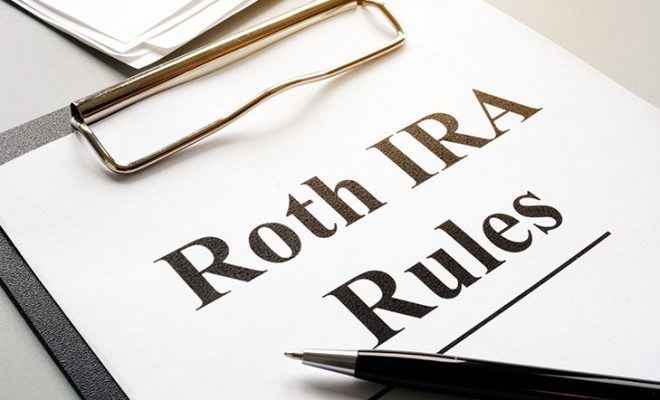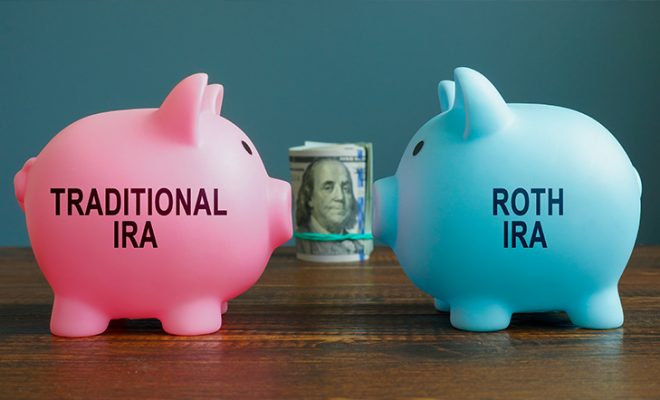What is the 10-Year Rule for Inherited IRAs, and How Does it Affect Your Retirement Savings?

An Individual Retirement Account (IRA), whether traditional, Roth, Simplified Employee Pension (SEP), or Savings Incentive Match Plan for Employees (SIMPLE), is a popular retirement savings tool. It not only allows individuals to invest independently outside of employer-sponsored plans like the 401(k) but also plays a significant role in estate planning. IRAs can be passed on to beneficiaries, such as a spouse, children, and others, after the account holder’s death. However, inherited IRAs are subject to specific rules that determine how the funds can be used by the inheritor. Understanding these rules is essential for both the original account owner planning an estate as well as the beneficiary of an IRA.
A qualified financial advisor can help you understand these terms and conditions effectively. This article will also explain the inherited IRA rules as of 2025 to help you make informed decisions.
Understanding the 2025 rules for beneficiary IRA withdrawals
1. Provisions under the Setting Every Community Up for Retirement Enhancement (SECURE) Act
The rules surrounding inherited IRAs have been altered after the SECURE Act was passed. The SECURE Act created two broad categories of IRA beneficiaries:
- Eligible designated beneficiaries
- Non-eligible designated beneficiaries
The primary distinction between the two is that eligible designated beneficiaries are granted more flexible withdrawal options compared to non-eligible designated beneficiaries. However, there are some further differences to note about both these categories, so let’s take a closer look at who qualifies as an eligible designated beneficiary and what that status entails.
- Surviving spouses: Surviving spouses have the most flexibility and are allowed to treat the inherited IRA as their own. They can roll it over into their own IRA and delay Required Minimum Distributions (RMDs) until they reach age 73 as of 2025 or later, depending on future legislative changes. They can also roll it into a qualified employer plan. Alternatively, they can remain as beneficiaries and take distributions based on their life expectancy.
- Minor children of the account owner: Minor children fall into the eligible designated beneficiaries’ category, which allows them to take RMDs based on their life expectancy. However, once they reach the age of majority, the 10-year rule is applied automatically, which mandates them to withdraw the full balance within ten years of the birthday they turned an adult.
- Disabled individuals: Beneficiaries who are disabled are also granted eligible designated beneficiaries’ status, provided they meet the Internal Revenue Service’s (IRS) criteria for disability. These beneficiaries may stretch distributions over their own life expectancy, just like spouses and minor children.
- Chronically ill individuals: A person who is considered chronically ill is not bound by the 10-year rule and can spread distributions across their expected lifespan.
- Beneficiaries close in age to the deceased: Individuals who are not more than 10 years younger than the deceased account holder also qualify as eligible designated beneficiaries and can take distributions based on their own life expectancy.
All other inheritors are considered non-eligible designated beneficiaries, which means they are subject to the 10-year inheritance IRA distribution rules.
2. Understanding the 10-year rule
The 10-year rule is one of the main rules to keep in mind when it comes to inherited IRA withdrawal requirements. Introduced under the SECURE Act, the rule specifies how non-eligible designated beneficiaries must handle inherited retirement accounts.
Previously, beneficiaries could use the stretch IRA strategy that allowed them to take RMDs based on their own life expectancy. With this, people could make small withdrawals spread over many decades and reduce their immediate tax burden. It also allowed the funds within the IRA more time to grow in a tax-advantaged manner. However, the SECURE Act removed this benefit for most beneficiaries. Now, unless a beneficiary falls into one of the eligible designated beneficiary categories, such as a surviving spouse, a disabled or chronically ill individual, a minor child of the account owner, or is close to the age of the deceased, they must abide by the 10-year rule.
Under the new rules, most non-eligible designated beneficiaries must withdraw all the money from the inherited IRA within 10 years of the original account holder’s demise. This applies regardless of the beneficiary’s age or income, and it applies to both traditional and Roth IRAs. There are no annual RMDs during this 10-year period, but the entire account must be emptied by the end of the tenth year. For example, if you inherit a traditional IRA in 2025 and are an eligible designated beneficiary, you would need to withdraw the entire amount within 10 years by 2035. If you delay taking withdrawals until 2035, the whole sum would be taxable in a single year. This can potentially push you into a much higher tax bracket resulting in most of the money from the account being wasted on taxes and nullifying the account owner’s years of hard work.
3. Exploring the different scenarios of RMDs
There are three main scenarios that determine how the RMD rules apply. The first is if the account owner dies before the Required Beginning Date (RBD). The RBD is generally April 1 of the year after the account holder turns 73. If the IRA owner dies before reaching this date, the designated beneficiaries are not required to take annual RMDs. However, the entire account must still be fully withdrawn within ten years from the year of death. So, you can choose to delay withdrawals for a few years and allow the account to grow. After a few years, you can start taking larger distributions. You can also align the withdrawals with your income. You can make withdrawals during the years when your income is lower. No matter what you choose, just ensure to empty the account within 10 years.
The second scenario is when the account holder dies on or after their RBD at the time of their death. In such a case, the designated beneficiary must begin taking annual distributions based on their own life expectancy starting the year after the account owner’s death. The account still must be emptied by the end of the 10th year. If the original account holder had not taken the RMD for the year of death, the beneficiary must ensure that a distribution is made before the end of that year.
The third scenario is if an eligible designated beneficiary dies. For example, if a surviving spouse or disabled child passes away, the successor beneficiary who inherits the account is no longer treated as an eligible beneficiary. Hence, they need to withdraw the remaining funds under the 10-year rule. However, the timeline for emptying the account is based on the life expectancy of the eligible designated beneficiary, not the original account holder. The 10-year countdown begins the year after the eligible designated beneficiary’s death.
It is important to be aware of how your age, relation to the beneficiary, and the RBD of the account owner impact you. In case of any confusion, you can reach out to a financial advisor and understand the applicable rules for your situation.
4. Knowing the tax consequences of an inherited IRA
The tax consequences of an inherited IRA depend on whether it is a traditional or Roth account. However, in both cases, the tax treatment of the inherited IRA remains the same as the original account.
If you inherit a Roth IRA, all distributions will typically be tax-free. The original account holder has already paid income tax on the contributions all those years. So, you do not have to be concerned about paying taxes. However, in order to enjoy tax-free distributions, you need to abide by the five-year rule. The Roth IRA must have been open for at least five years before the original owner’s death. If it were not, any earnings in the account could be subject to income tax.
In the case of a traditional IRA, the distributions you take are taxed as ordinary income. Your withdrawals are added to your total income for the year and taxed at your current income tax rate. Nevertheless, you need to withdraw the funds in a timely manner, as not taking the full RMD can lead to a penalty as high as 25% of the amount not withdrawn. You do have the option to correct it, in which case, the penalty may drop to 10%. However, you will still bear an avoidable cost.
Effective retirement planning strategies to make the most of an inherited IRA
Here are a few steps to help ensure the inherited account is optimally used:
1. Convert your IRA to a Roth account
If you have a traditional IRA, you can consider converting it into a Roth account to ensure that your heirs are not burdened with the responsibility of paying taxes. Inheriting a Roth IRA can be much simpler than inheriting a traditional IRA. With a traditional IRA, beneficiaries must pay ordinary income taxes on every distribution they take. If they are forced to take large withdrawals under the 10-year rule, they can be pushed into higher tax brackets. Roth IRAs, on the other hand, allow tax-free withdrawals, as long as the account has been open for at least five years before the original account holder’s death.
Usually, there are two ways to take out funds from an inherited IRA – a lump sum and regular instalments. Taking the full amount as a lump sum can be a convenient option and may be suitable if the beneficiary has an immediate financial need, such as buying a house, paying for a child’s college education, covering a health emergency, or paying off high-interest debt. However, this approach can result in a significant tax bill for the year the withdrawal is made. A large withdrawal will push the beneficiary’s total income for the year into a higher tax bracket and increase the tax they owe. Such a situation can be averted if they inherit a Roth IRA. With a Roth account, the beneficiary has the option to withdraw lump sum funds without having to worry about taxes. Even though non-eligible designated beneficiaries are required to withdraw all the funds within 10 years, they have the flexibility to choose a lump sum withdrawal with no tax liabilities. Having a Roth account simplifies the tax process, as individuals no longer have to consider taxes in the equation.
2. Communicate with your heirs and plan ahead
If you are planning to pass on an IRA to your loved ones, make sure they are prepared for the responsibilities that come with inheriting it. Many people are unaware of the rules for beneficiary IRA withdrawals, tax implications, and timing requirements. Therefore, it is your responsibility to take time to talk with your heirs about how inherited IRAs work, what kind of account they will be receiving, such as a traditional or Roth account, and how they might be affected based on their own income and financial goals. You can even work with a financial advisor to create a plan that your beneficiaries can follow. This helps you protect your loved ones from making mistakes while ensuring that your hard-earned savings are adequately used. It also allows your beneficiaries to plan their other income in advance and decide how to structure their overall tax strategy to reduce taxes when they inherit the IRA.
Navigating inherited IRA rules to maximize your savings
The inherited IRA rules for 2025 may appear complex, which is why it is essential for both account owners and beneficiaries to fully understand them. Knowing these rules can help minimize the risk of penalties and ensure better tax planning. Moreover, since these regulations can change over time, it is also beneficial to consult a qualified financial advisor. They can ensure that you follow the proper guidelines. The advisor can help keep track of withdrawal deadlines, new inherited IRA rules, and amounts due.










